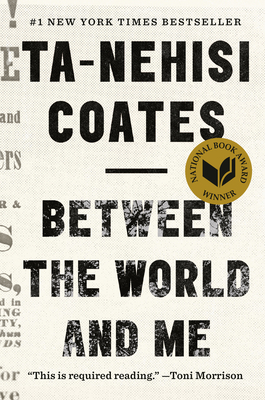Between the World and Me
Ta-Nehisi Coates

“It’s easy to be a saint in paradise.”
-Benjamin Sisko, Deep Space Nine (“The Maquis: Part 2”)
My mind drew a strong connection between this book and an article on one of my favorite economics bloggers, Steve Randy Waldman (http://www.interfluidity.com/v2/5876....), published early last year. After reading the book, I went back and read the article again. To my surprise, Waldman quotes Coates at length to illustrate the point! I had completely forgotten that. (The blog article was published before “Between the World and Me”; the quotes are from on online exchange.)
The article and the book are extremely complementary to each other, illustrating similar issues from a first-person (book) and third-person (article) perspective. The article, for those who don’t want to read the full text, Waldman basically makes the following argument. Societies face a “trilemma” in which they can choose only two of three: liberalism, inequality, and “nonpathology.” The former two are reasonably familiar; the last is defined as:
the absence of a sizable underclass within which institutions of social cohesion — families (nuclear and extended), civic and religious organizations — function poorly or at best patchily, in which conflict and violence are frequent and economic outcomes are poor. From the inside, a pathologized underclass perceives itself as simultaneously dysfunctional and victimized. From the outside, it is viewed culturally and/or morally deficient, and perhaps inferior genetically. Whatever its causes and whomever is to blame, pathology itself is a real phenomenon, not just a matter of false perception by dominant groups.
Waldman argues that the US has chosen inequality and liberalism, with the result that the poor are pathologized. (He doesn’t talk directly about race per se, but his extensive quoting of Coates makes the connection clear.) The author basically says that the pathologization of the poor, and I would say minorities in general and blacks in particular, is necessary to maintain the status quo position of the elites, if the image of a just liberal social order is to be maintained. Serious remedies such as reparations are ex ante declared out of bounds of reasonable discussion.
Coates often refers in this book to “the Dream,” without specifically defining what it means. That is fine with me; it’s a first-person narrative, not a treatise in which all terms need to be defined. But I think a serviceable definition of “the Dream” is the view of the elites in a society that combines inequality and liberalism. The Dream is to say that society is free and fair, and that we made it to the top, so good job us. When Coates says that “the Dream rests on our backs,” I can see this as saying that the combination of inequality and liberalism necessitates the pathologization of the black community, per Waldman. Coates writes at some length in the book about the pathologization he experienced growing up in a dangerous inner-city community, writing to his son about the extent to which he has been able to move beyond it but also the extent to which it remains with him.
Much has been made of the fact that Coates' book does not contain an analytical framework, diagnoses, or prescriptions. For my part, I take it in the same spirit as a Platonic dialog, which similarly tend to end without a satisfying conclusion. They are less about telling the readers what to think than suggesting things for us to think about.